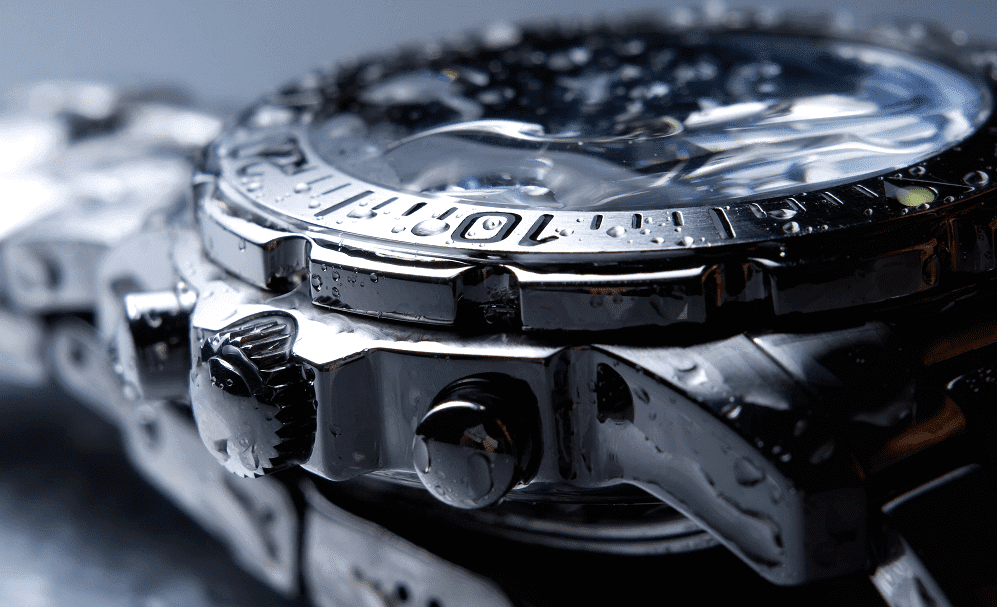A steel mechanical watch, making its owner's gestures, words and eyes firmer and more confident, was glittering on the wrist of Swiss professional explorer and adventurer Mike Horn. Horn completed solo journeys, trekked to the North Pole and… created a line of watches in partnership with Swiss Panerai. Horn, being a Panerai brand ambassador, looks at the watch on his left wrist now and again during his travels across oceans and into the mountains. "When I say this watch works, it works," says the ruggedly handsome Horn as he continues to sing the praises of his watchmaker partner.
All of the twists and turns associated with product placement were a response to the quartz crisis in the watchmaking industry. During the 1980s, quartz watches took leading positions in the watch market and seemed to have every chance of squeezing mechanical watches out of the retail market, as well as off their customers' wrists and out of their hearts. Quartz watches won that fight in many ways, since they offered more accurate and practical mechanisms to their customers and less expensive and more efficient fabrication technologies for watchmakers. By the end of the 20th century, mechanical watches were only found in in the expensive luxury and modern categories. Timepieces remain a person’s true companion, undergoing improvements and modifications depending on the person's needs over time. It became possible not only thanks to the watchmakers’ expensive marketing efforts. Accurate mechanisms and reliable cases in steel and experimental innovative materials make modern watches last forever.
The Oldest Watch in the World
It should be noted that the basis for the extreme durability of mechanical watches was created centuries ago. Some history scholars think that the invention of the wearable timepiece is attributed to the son of a counterfeit coin minter from Nuremberg, Peter Henlein.

His love for small, intricate mechanisms, such as timepieces and locks, was truly limitless. The tastes and ambitions of the young lad planted the idea of learning the locksmith trade. At the age of 19, Peter was involved in a brawl. The fear of being jailed brought Peter to a Franciscan monastery where he asked for asylum. The future craftsman likely acquired the knowledge of the craft of clockmaking from the Franciscan friars, who were brilliant scholars, mathematicians and astronomers of that time. Over time, Henlein became widely known for his pomander watches: spherical ornaments that were often worn as pendants or attached to clothing. The pomander watches were regarded, as we say now, as trendy as well as expensive items sought after by the nobility and rich people.
The pomander watch of the early 16th century is today considered the oldest timepiece in the world, and Peter Henlein is credited as the inventor of the watch. It costs up to US$80 million. The pomander watch is encased in brass, gold plated on the outside and silver plated on the inside. The mechanism is made completely of iron (some of Henlein's pomander watches were made of steel, but not this one).

Benjamin Huntsman, Clockmaker and Steelmaker
Curiously, a clockmaker from Sheffield, UK, is credited as the inventor of a crucible process for casting steel (one of the most important stages in the development of the steel industry). Englishman Benjamin Huntsman can rightly be called a genius. Besides being a keen clockmaker, Huntsman was a lock and tool maker, and practised as a surgeon and oculist. He was dissatisfied with the quality of the metal in clocks due to its chemical composition, so he started to carry out clandestine experiments to try and find the ideal way of melting steel. Finally, Huntsman came up with very hard steel by melting it in clay crucibles. By the way, back then (the 18th century) Huntsman had, in fact, reinvented an ancient recipe: smelting in clay crucibles dates back a thousand years and was used by gunsmiths in the Middle East, India and Persia; however, the secrets of that time were lost.
Nonetheless, buyers in Sheffield obstinately refused to buy the quality steel produced by Huntsman on the grounds that it was so much harder than that which they had been accustomed to using. So, Huntsman was exporting the steel to France for many years. Thus, a charming English detective story began. As you might guess, Huntsman did not take out a patent for his crucible process and maintained secrecy around it. The workers involved in the steelmaking also committed to keep their mouths shut. Over time, steelmakers understood that Huntsman had found a pot of gold' and decided to wrest his secret from him by all means. Samuel Walker, a rival steelmaker, dressed up as a beggar and knocked on the doors of Huntsman's steel foundry seeking shelter. The soft-hearted crew took pity on the man and ushered him in. Taking advantage of their kindness, the stranger was able to observe the crucible process from the beginning to end. Ultimately, the nimble-witted conman began his own crucible steel production in Sheffield. Despite that, Huntsman's business thrived for many generations (so did timepieces made of the crucible steel).
Cases Made of Stainless Steel
Steel was and remains the most important material for timepiece mechanisms; however, gold was widely used for timepiece cases. During many centuries of watchmaking, the gold watch was regarded as an ornament and trophy for its owner until the 1930’s, when the first stainless steel-cased watch emerged.
Such watches were meant primarily for soldiers, pilots and divers and were regarded as 'utility watches'. Later, civilians showed interest in this unusual new timepiece. The first stainless steel cases and wristbands were too bulky and too expensive. For example, some models were 6 centimetres in diameter and they were more expensive than comparable models in gold. We should keep in mind that methods of processing such a hard material were almost 100 years old and imperfect . Therefore, it was time consuming to manufacture such models. For example, on the Audemars Piguet Royal Oak that later became an iconic model, the wristband alone required 250 edges to be rounded off by hand, and the fascinating interplay of ground and polished surfaces brought many a polisher to the edge of despair.
Ae breakthrough happened in the early 1970s, when the famous Rolex company started to promote its models in stainless steel using PanAm pilots, divers, and the international jet set. Back then, other well-known manufacturers, such as Vacheron Constantin, Patek Philippe, and Audemars Piguet did not have any stainless steel models in their product ranges and had to join the race to keep pace. Steel models from the Swiss designer and artist Gerald Genta became popular back then as well. Gerald Genta today is regarded as a legend in the watch industry and the maker of the Fabergé of watches, while his stainless steel watches are regarded as timeless classics.
Steel models make up a half of the product range of the large watchmakers. The waiting lists for some models are very long. That being said, some brands, such as Rolex and Cartier, produce their own wristbands, although stainless steel processing is still considered a very complex process.

New Trends in Watchmaking
Just as the stainless steel watch made its triumphal march, the global watch market saw the first titanium models produced by Citizen. Watchmakers do not deny that titanium was and remains a suitable light, durable and robust material for manufacturing watches. However, it has not become as popular as stainless steel (perhaps, because of its comparatively high price).
Another competitor to steel’s dominance is the Carbotech material developed by Panerai five years ago. Carbotech is a reinforced carbon fibre that is super tough and offers a special texture to the watch.
In 2017, the Swiss International Watch Company introduced a hybrid material called Ceratanium, a blend of titanium with ceramic of strikingly black colour that is extremely light and durable.
It is now clear that the race for innovation is the pursuit of the goal of making the traditional steel watch lighter, while also tremendously strong. Time will show who will win the race. In the meantime, drivers and politicians, explorers and actors adjust the bold and steel Cartier and Rolex watch on their wrists in their accustomed manner.
